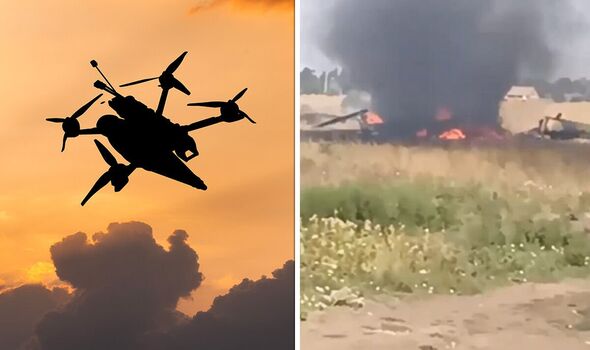Vladimir Putin has been dealt an embarrassing blow after a Russian helicopter was downed by an explosives-packed Ukrainian drone costing less than £400.
Footage shared on the Telegram messaging app appears to show the aircraft on the ground in flames in Donetsk in the east of the country.
One Russian blogger yesterday commented: “A speedy recovery to the survivors.”
A second blogger, who said the helicopter in question was a 12-ton, three-crew Mi-8, said there was no news of casualties.
A third suggested the helicopter had been “caught at the moment of takeoff” by an opportunistic drone pilot using a quadcopter FPV drone which retails at £390.
Ukrainian far-reaching drone attacks began a year ago with attacks on Moscow.
“One video shows a drone making a turn and diving toward the target in broad daylight, to the sound of continuous – and ultimately futile – defensive gunfire.
“If the scale of the drone attacks is maintained at the levels of March and Russian air defences do not improve, Ukraine will be able to keep damaging Russian refineries faster than they can be fixed, slowly but steadily eroding the country’s refining capacity.”
The latest wave of attacks signified a major shift in modern warfare, Mr Vakulenko said.
He explained: “Navigational equipment, including solid-state inertial systems that are impervious to jamming and signal spoofing, is now affordable and abundant; the emergence of the Starlink communications system has made it possible to remotely control drones from 1,000 km away; and the availability of satellite images allows for the selection of targets with an accuracy of several metres.
“Both sides are engaging more and more in total war, not only targeting current or future military capacity, but also attempting to destroy as much of the enemy’s economy as possible – spending substantial parts of their military potential in the process.”
